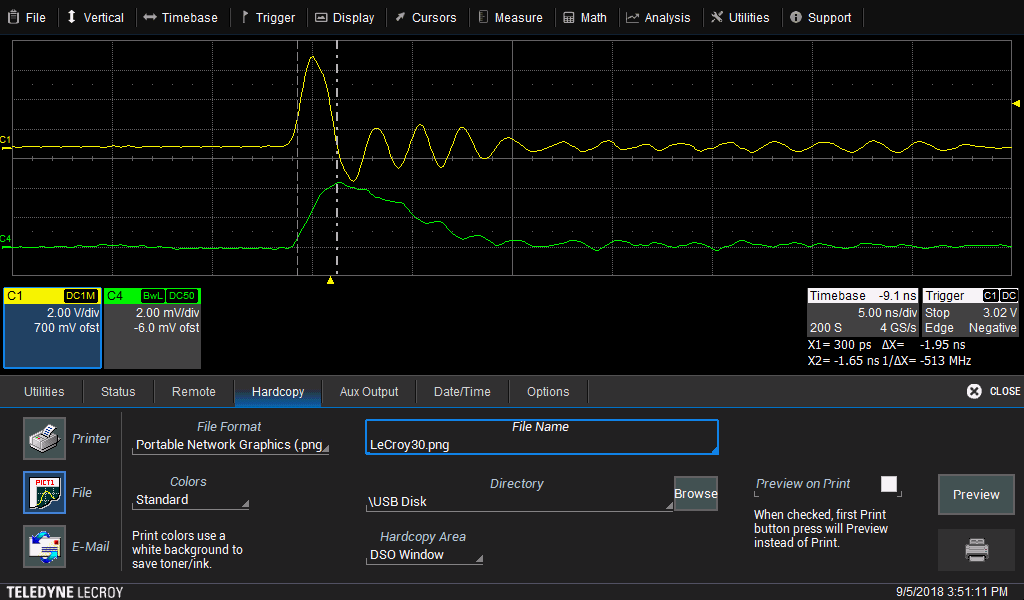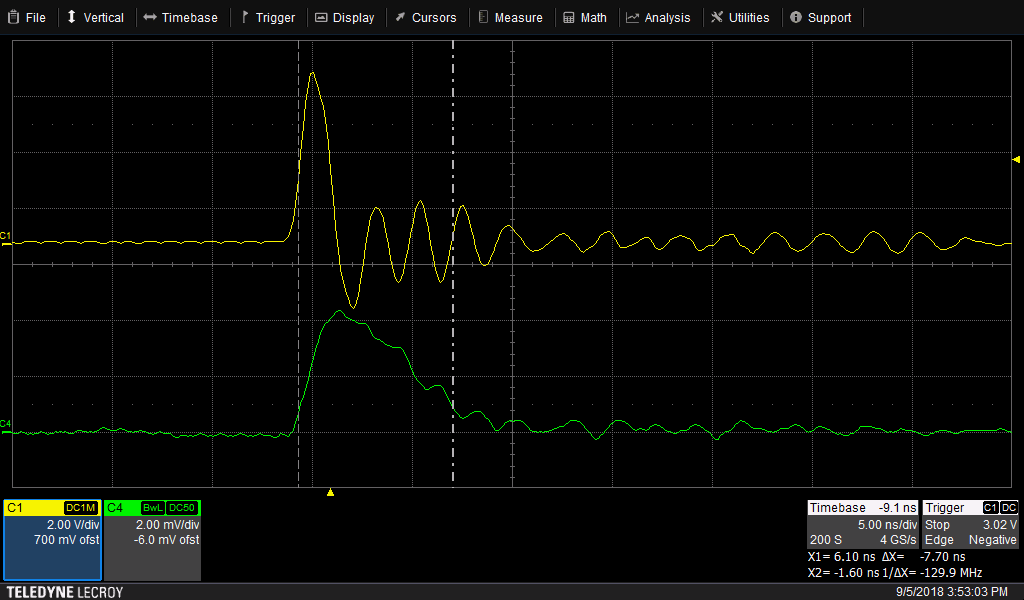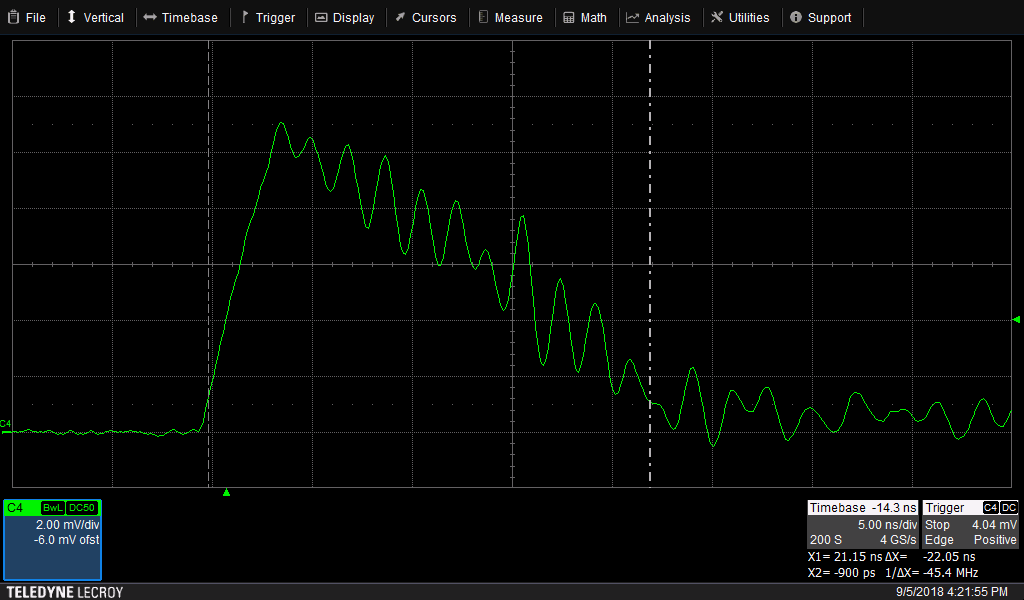Hello,
I'm using the LMG1020-EVM board from TI. I'm testing this because I am planning on using the LMG1020 in a custom diode driver design. The evm is advertised as a 1nS pulse width capable driver. Does the 1nS pulse width spec apply to the LMG1020? I'm seeing that the LMG1020 can produce a pulse close to 1nS, but I don't see anything close to 1nS at the output of the GaN FET. By output I mean the "current" waveform through the diode. The Green trace was produced by a ThorLabs DET080C detector. The yellow trace is the gate of the EPC GaN FET on the board.
My test setup produces a ~2nS pulse at the gate of the GaN fet, but the output is ~10nS. I've removed the load resistors and placed a diode (OSRAM SPL PL90_3) as the load. The data sheet is attached.
I've cut the legs as short as I can and attached it in the most optimized way I could (short leads, clean solder to pads to eliminate ESL etc..). I'm driving the diode power (J2) with 30V in this case. I've noticed that if I increase ONLY the diode power the FET output width gets substantially wider. For example - going from 30V to 50V at J2 increases the output pulse width by 5 times. This is when ONLY increasing the diode voltage.
In summary I have a few questions.
1. The way TI describes this evm is that it can generate a 1nS pulse width, but does TI mean this 1nS applies to the LMG1020 output only or the performance of the actual GaN FET?
2. Is it possible to get a 2nS pulse out of this board with an input voltage of ~60V. The board I believe is rated to 75V so using a fairly high (say 60V) power can you produce a 2nS pulse from the FET?
3. I noticed the and gate on this dev board/evm is only rated (in the data sheet) to perform at 100Mbits. This leads me to believe that the and gate can only produce a pulse of 10nS. Is this correct? It seems like the and gate is not capable of producing a 1nS pulse.
4. The below screenshot shows shows the detector response when I increased the diode voltage. There is a lot of oscillation here. The below screenshot shows the response from the ThorLabs DET080C just like the above screen shot mentioned above. This is strictly an optical measurement. For diode driving purposes using this evm is this a common electrical ringing?
5. Why does the FET look like it turns on faster than it turns off?




